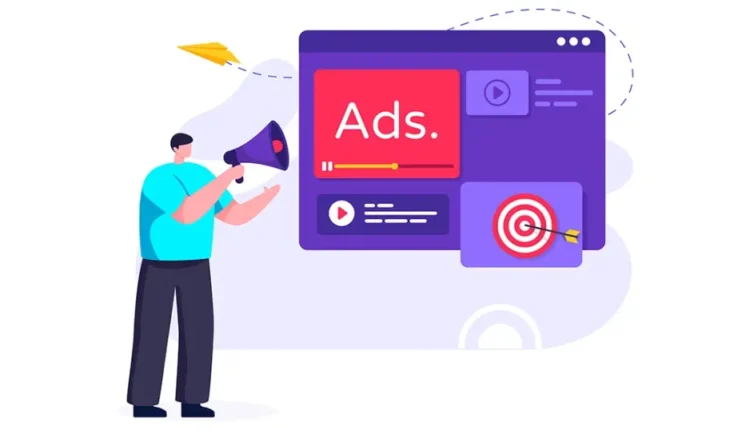In the fast-paced world of digital marketing, businesses use various advertising formats to grab the attention of their target audience. Among these, static ads remain a fundamental yet powerful tool for brand awareness and product promotion. This article explores what static ads are, their advantages, how they work, and tips to create effective ones.
What Are Static Ads?
Static advertisements are digital advertisements that consist of fixed, non-moving content. Unlike dynamic ads, which can feature animations, videos, or other interactive elements, static ads are simple and straightforward. They usually contain a single image, text, or a combination of both, designed to convey a message or promote a product.
These ads can be displayed across various platforms, such as websites, social media, mobile apps, and more. Their simplicity makes them a common choice for businesses that want to deliver a clear and concise message to their audience.
Key Features of Static Ads:
- Fixed Content: The elements within the ad do not move or change.
- Quick to Load: Since they are often smaller in file size compared to dynamic ads, they load faster.
- Simple Design: Static ads are often clean and focused, delivering the key message in a clear manner.
Types of Static Ads
Static ads can take different forms, depending on where they are displayed. Some of the most common types include:
- Banner Ads: These are rectangular image-based ads that appear on websites. They are often located at the top or bottom of a webpage or embedded within the content.
- Sidebar Ads: These are vertical ads placed on the sides of webpages, where users can see them while browsing content.
- Social Media Ads: Platforms like Facebook, Instagram, and Twitter allow businesses to create static image ads to target specific audiences based on their interests and demographics.
- Print Ads: Though primarily digital, static ads can also exist in physical formats such as posters, flyers, or magazine advertisements.
Why Choose Static Ads?
Static ads may seem simple compared to more interactive formats, but they offer several benefits that make them a valuable choice in digital advertising.
1. Cost-Effective
One of the primary advantages of static ads is their affordability. They are relatively inexpensive to create and distribute, making them an ideal option for small businesses or startups with limited budgets. Designing a static ad often requires less time and fewer resources than dynamic alternatives, such as videos or interactive banners.
2. Easy to Design
Creating a static ad doesn’t require advanced graphic design skills. Basic tools like Canva or Photoshop can be used to create high-quality static ads quickly. This simplicity allows businesses to focus on crafting a clear message without worrying about complex animations or effects.
3. Fast Loading Times
Loading speed is indeed crucial for online ads. Ads that take too long to load may be ignored or, worse, cause a website to lag. Static ads, being simple image files, load much faster than dynamic ads. This improves user experience, especially for users with slower internet connections.
4. No Technical Issues
Unlike dynamic advertisements that require special coding or file formats (such as GIFs, HTML5, or video files), static ads are straightforward. This simplicity reduces the risk of technical issues, such as incompatibility with certain devices or browsers.
5. Clarity of Message
Static advertisements are effective at conveying a clear, focused message without distractions. With fewer elements competing for attention, viewers can quickly understand the ad’s purpose, whether it’s to promote a sale, announce a product launch, or create brand awareness.
Drawbacks of Static Ads
While static ads offer many advantages, they also come with limitations.
1. Lack of Engagement
Static ads are less interactive compared to dynamic ads. They don’t encourage user interaction, which can result in lower engagement rates. Without motion or interactivity, some users may overlook or ignore the ad entirely.
2. Limited Creativity
The fixed nature of static advertisements may limit creativity. Since there’s no motion, advertisers have to rely on a single image and text to make an impact. This can be challenging when trying to convey complex messages or highlight multiple features of a product.
3. Not Suitable for Complex Campaigns
For businesses running complex ad campaigns that require showcasing various features, demonstrating product functionality, or telling a story, static advertisements may not be the best fit. Dynamic ads with video or animation are more effective for these types of campaigns.
Best Practices for Creating Effective Static Ads
Despite their simplicity, static ads can still be highly effective if designed with care. Here are some tips to ensure your static advertisements make an impact:
1. Clear and Concise Messaging
Your ad’s message should be straightforward as well as easy to understand. Avoid cluttering the ad with too much information. Focus on one key point or call to action (CTA) that you want your audience to remember.
2. High-Quality Imagery
The visual aspect of static ads is indeed crucial. Use high-quality images that align with your brand and product. Blurry or pixelated images can create a negative impression and further reduce the effectiveness of your ad.
3. Strong Call to Action
Every ad should have a clear call to action, whether it’s “Shop Now,” “Learn More,” or “Sign Up.” This encourages viewers to take the next step after seeing your ad.
4. Keep Branding Consistent
Ensure your brand’s logo, colors, and fonts are consistent with your overall branding strategy. This helps in building brand recognition and trust over time.
5. Optimize for Mobile
With a significant portion of web traffic coming from mobile devices, it’s indeed important to design static ads that are mobile-friendly. Ensure that your ad looks good and is easy to read on smaller screens.
Conclusion

Static advertisements indeed continue to be an essential tool in the digital advertising landscape. Their simplicity, ease of design, and also affordability make them a popular choice for businesses of all sizes. While they may not offer the same level of engagement as dynamic ads, they can still be highly effective when used strategically. By focusing on clear messaging, high-quality visuals, and a strong call to action, businesses can create compelling static advertisements that further drive results.
Frequently Asked Questions on Static Ads (FAQs)
1. What are static advertisements?
Static advertisements are non-moving, fixed advertisements that typically feature an image and text. They also lack animations or interactive elements.
2. What are their benefits?
They’re cost-effective, easy to design, quick to load, and also deliver clear messages without technical complications.
3. Where can I use them?
Static advertisements can be displayed on websites, social media, mobile apps, as well as in print formats like posters or magazines.
4. Do they perform well compared to dynamic ads?
While they lack interactivity, they perform well in delivering concise, focused messages, especially for brand awareness or simple promotions.


